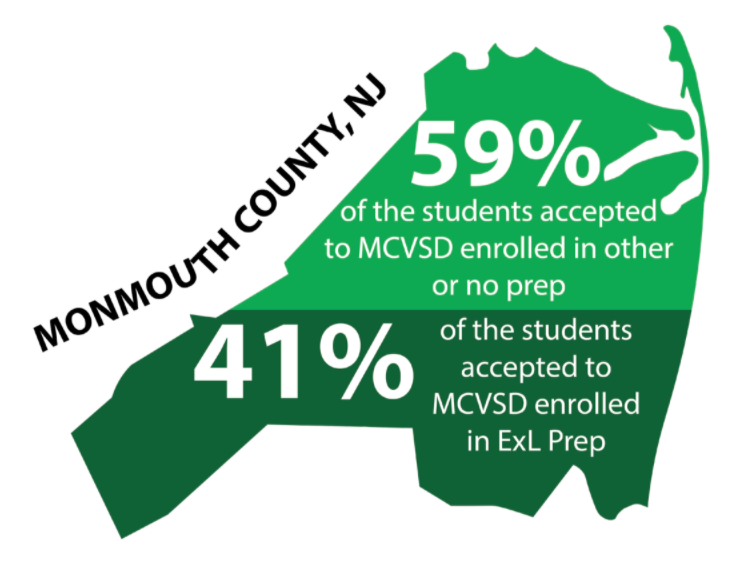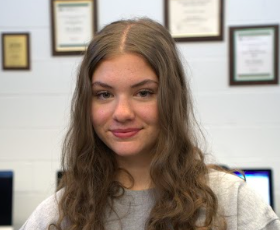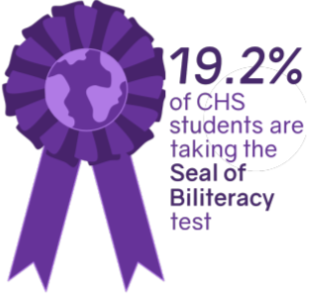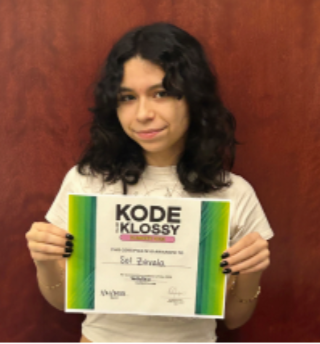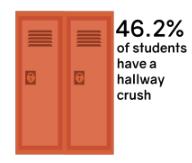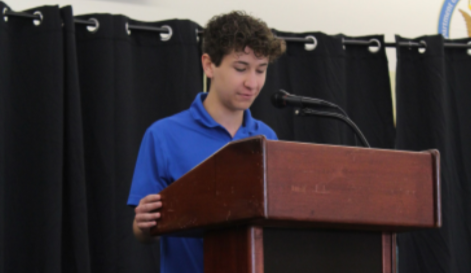Putting the MCVSD application process to the test
ExL Prep reported that 41% of students accepted to the MCVSD Class of 2025 used their services.
January 28, 2022
MCVSD students are already familiar with the stressful, competitive standardized testing process before junior year SAT season. These students are first introduced to this process in eighth grade, when they sit, hopeful, in front of number two pencils and a scantron, aiming for admission to the career academy of their choice.
Receiving a proficient score on the entrance exam is a requirement to be selected for one of the five four-year MCVSD Career Academies. This process closely mimics that of the SAT or ACT in that earning a high score can open the doors to admission to a prestigious institution.
Though middle schools in Monmouth County do not cater directly to the MCVSD entrance exam, some students felt more prepared by their curriculum than others.
Both freshman Brody Lippincott of Wall and senior Jacob Irwin of Middletown concluded that their course load in middle school covered the material, whereas junior Charles Raynor of Ocean Township attributed extra help from a generous teacher to preparing him for the exam.
Junior Skyler Glusman of Middletown had a middle school experience that potentially hindered her ability to perform well on the entrance exam.
“Thompson [Middle School] did nothing,” Glusman said. “I didn’t think my knowledge of seventh grade math was adequate enough because there were quite a few times when I was kicked out of extra help, and that’s why I did prep.”
The appeal of private test prep classes is no secret. ExL Prep, the most commonly used test prep center of students interviewed, found that 83.2% of students that participated in the course were accepted to an MCVSD four-year academy in the Class of 2025.
This success rate considered, it is no surprise that not taking a prep course would be a road-block for many students. For example, Glusman felt that without ExL Prep she would not have gotten into Communications High School.
“I was getting 60s on practice test,” Glusman said. “The math tutoring is what really helped.”
However, test prep is not cheap. Of the test prep centers specializing in the MCVSD entrance exam, the most expensive test prep options cost nearly $5,000 (Foley Prep) and the cheapest comes to $200 (Origins Tutoring). Students that participated in prep at ExL Prep made up 41% of the students accepted to one of five four-year MCVSD academies in the Class of 2025, according to ExL Prep. The ExL “Winter Course” costs $595 according to the ExL Prep website. This calls into question whether this prep makes the MCVSD inherently discriminatory to those of lower socioeconomic status.
Regarding the culture at MCVSD schools, Raynor commented on the demographic he sees represented at CHS.
“I don’t know about other people’s experiences, but I feel that this school is more privileged,” Raynor said. “Maybe because of the education system and because of where we are from, we act more privileged. I mean, do you see some of the people in this school?”
Statistics regarding reduced lunch rates support these statements. According to the U.S. Department of Agriculture, reduced or free lunches are available to any student with a household income 130% below the poverty line. By federal standards, $25,926 gross annual income for a family of four in New Jersey was considered impoverished in 2019.
In Monmouth County, as reported by the Monmouth County Office of Youth Services Planning, 43% of students qualified for free or reduced lunches in the 2019-2020 school year, yet at CHS in the same year, just under 2% of students qualified, according to the National Center for Education Statistics.
Programming teacher Laura Gesin believes that test prep may be a contributor to the socioeconomic discrepancies between the student body and the community.
“I think that it [entrance exam test prep] favors people who can afford it financially, which definitely skews the demographics,” Gesin said.
The idea of working toward creating a more inclusive environment reflective of the community is not a new or independent endeavor. According to the New York Times, a recent lawsuit in New York City, led by IntegrateNYC, has been filed against gifted and talented programs. Its goal is to alter the admissions process and change the demographic of specialized programs.
In New Jersey, no such legal efforts have been taken to help create an application process free of influence from external factors, including test prep courses.
At the MCVSD, though, efforts to create a more diverse and inclusive school atmosphere are in action. The district has even established a “Diversity, Equity, Access and Inclusion” coaching team.
According to the program staff, the goal is to “develop a diverse and inclusive curriculum that reflects the wide range of voices, perspectives and experiences of the students and families in our community and the world.” Additional efforts to make sure policies and procedures are consistent with these goals, as well as professional development for educators and staff, are also in place.
Just cleared to participate in coursework for this program is Laura Gesin, who believes that it is the correct next step in creating a student body reflective of the surrounding community.
“The district is trying to address it,” Gesin said. “They can’t really address the test prep but they can address the content [of the exam] and how we recruit.”



